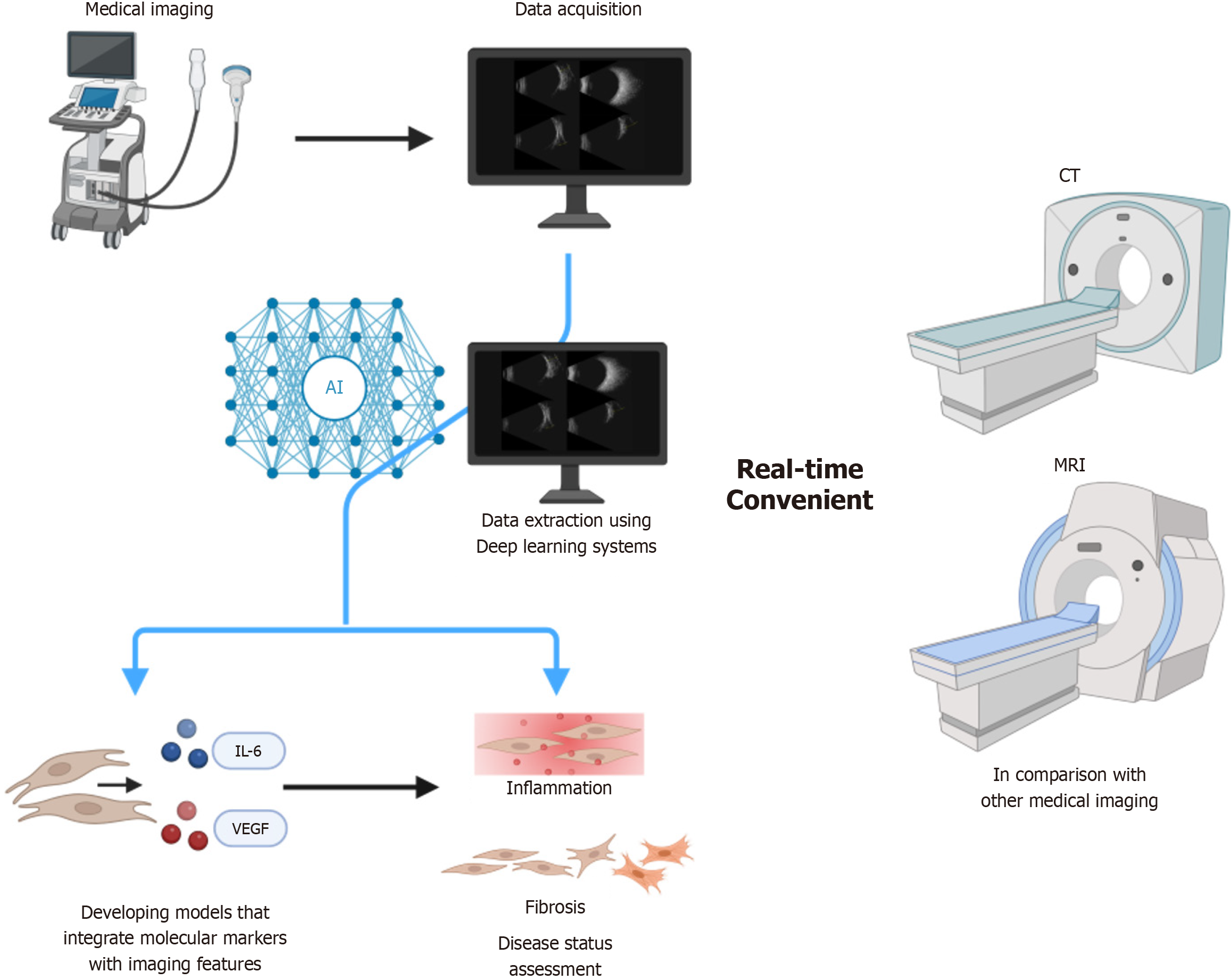Copyright
©The Author(s) 2025.
World J Radiol. Nov 28, 2025; 17(11): 112638
Published online Nov 28, 2025. doi: 10.4329/wjr.v17.i11.112638
Published online Nov 28, 2025. doi: 10.4329/wjr.v17.i11.112638
Figure 1 Artificial intelligence-assisted ultrasound diagnostic schematic diagram.
Ocular ultrasound combined with deep learning and other artificial intelligence technologies can extract a large amount of imaging data, and construct predictive models by integrating molecular markers such as vascular endothelial growth factor and interleukin-6 to assess the disease status of thyroid-associated ophthalmopathy. Deep learning processes ultrasound data alongside vascular endothelial growth factor/interleukin-6 levels to predict disease severity. This is more real-time and convenient compared to other imaging methods such as computed tomography and magnetic resonance imaging. AI: Artificial Intelligence; VEGF: Vascular endothelial growth factor; IL: Interleukin; CT: Computed tomography; MRI: Magnetic resonance imaging.
- Citation: Shi JF, Zhou WY, Zhang HX, Shen Y, Zhang H, Li T. Advancements and challenges of ultrasound imaging in the management of thyroid-associated ophthalmopathy. World J Radiol 2025; 17(11): 112638
- URL: https://www.wjgnet.com/1949-8470/full/v17/i11/112638.htm
- DOI: https://dx.doi.org/10.4329/wjr.v17.i11.112638













